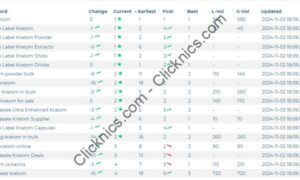Understanding NDIS funding categories can be daunting as you try to grasp the system and your support entitlements. The NDIS allocates funding based on what each person needs, and participants receive plan allocations for ‘reasonable and necessary’ services that support their goals.
For those looking for trusted local assistance in Brisbane, Neighbourly Community Care is a well-regarded provider that helps participants understand their NDIS options and get the most from their plans.
The NDIS funding structure has three main classifications: Core, Capital and Capacity Building. These categories are the foundations of NDIS funding and determine how participants can use their support money effectively. This detailed guide breaks down each category and explains the available supports under them.
This piece covers all 15 NDIS support categories that serve specific purposes. You’ll gain clarity on funding options and ways to make the most of your plan. The knowledge shared here will help you confidently navigate the system in 2025, whether you’re just starting with NDIS or want to better understand your current funding.
Understanding NDIS Funding Categories
NDIS splits its funding across three support budgets that cater to a participant’s different needs.
Core Supports handle your day-to-day activities and offer the most flexibility in your NDIS plan. This budget has four categories: Assistance with Daily Life, Consumables, Transport, and Assistance with Social and Community Participation. You can move funds between these categories freely, except when they’re earmarked for specific purposes like transport or shared living.
Capacity Building Supports boost your independence and skills. This budget works differently from Core funding and splits into eight support categories. You can’t move money between these categories, which include Support Coordination, Improved Daily Living, Health and Wellbeing, Relationships, and areas that target employment, learning, and accommodation.
Capital Supports pay for one-off items like assistive technology and home modifications. This budget offers the least flexibility and needs quotes for each item.
The system will introduce Recurring Transport as a new support type in 2025. The support categories have grown from 15 to 21 to simplify understanding, and budgets now show at the category level instead of line-by-line costs.
Core, Capital and Capacity Building Supports Explained
The three main NDIS funding categories each play a unique role in meeting participants’ needs. Let’s look at how they work.
Core Supports handle everyday assistance and give you the most flexibility. This category has Assistance with Daily Life that pays for personal care and house cleaning. You’ll also find Consumables for things like continence products. Transport funding helps you get around, while Social & Community Participation funding pays for support workers who help you join in activities. You can move most Core funding between these areas freely, though some money like transport has specific rules.
Capital Supports pay for expensive one-off items and are nowhere near as flexible. This category has Assistive Technology for equipment that costs more than $2,300, such as wheelchairs or communication devices. It also covers Home Modifications from small changes (under $30,600) to major structural work.
Capacity Building Supports help you become more independent and skilled. The funding here can’t move between categories. These supports give you Support Coordination, Improved Daily Living for therapy services, and help with finding and keeping jobs. You’ll also get support for building relationships through positive behaviour development, plus Health and Wellbeing funding for exercise or dietary help related to your disability.
These three budgets work as one to give you detailed support that matches your personal goals.
What NDIS Funds and What It Doesn’t
The NDIS bases all funding decisions on the principle of “reasonable and necessary” supports. This core concept guides funding across all NDIS categories.
The NDIS will fund supports that:
- Are directly related to your disability
- Represent value for money
- Are likely to work and benefit you
- Take into account informal supports from family and friends
- Help you pursue your goals and aspirations
The NDIS does not fund:
- Supports unrelated to your disability
- Everyday living costs like groceries, rent, or utility bills
- Items covered by other government systems (Medicare, education)
- Experimental or unproven treatments
- Supports that might cause harm or pose risks
Understanding these boundaries helps participants make better use of their NDIS funding. This difference becomes especially important when you plan supports that might fall into grey areas. To name just one example, the NDIS typically covers transport costs linked to funded activities, but not general transportation.
The NDIS guidelines about funding continue to evolve. By 2025, we expect to see clearer lines between disability-specific needs and ordinary living expenses. The focus will shift more toward supports that truly boost independence and participation.
Conclusion
Understanding how NDIS funding categories work together makes the system easier to navigate. This piece has explored three main funding types: Core, Capital, and Capacity Building. Each type plays a unique role to support participants’ needs and goals.
Core Supports give you flexibility for daily assistance. Capital Supports help with one-time purchases like assistive technology. Capacity Building funding works differently. It provides targeted help to build independence and skills. These categories create a detailed framework that works for NDIS participants’ diverse needs.
The “reasonable and necessary” principle is the foundation of NDIS funding decisions. This basic concept helps determine which supports line up with your disability-related needs and personal goals. Your funding goes where it benefits you most.
The 2025 changes to support categories show the NDIS’s dedication to making the system more accessible and easier to understand. The number of categories will grow from 15 to 21, and a new Recurring Transport support will be added based on what participants need.
This knowledge helps you approach your NDIS plan with confidence. A clear understanding of these categories helps you make the most of your funding. You can choose supports that boost your independence, community participation, and quality of life. The NDIS journey might look complex at first, but a good grasp of these funding structures gives you the ability to make smart choices about your supports and reach your personal goals.





























